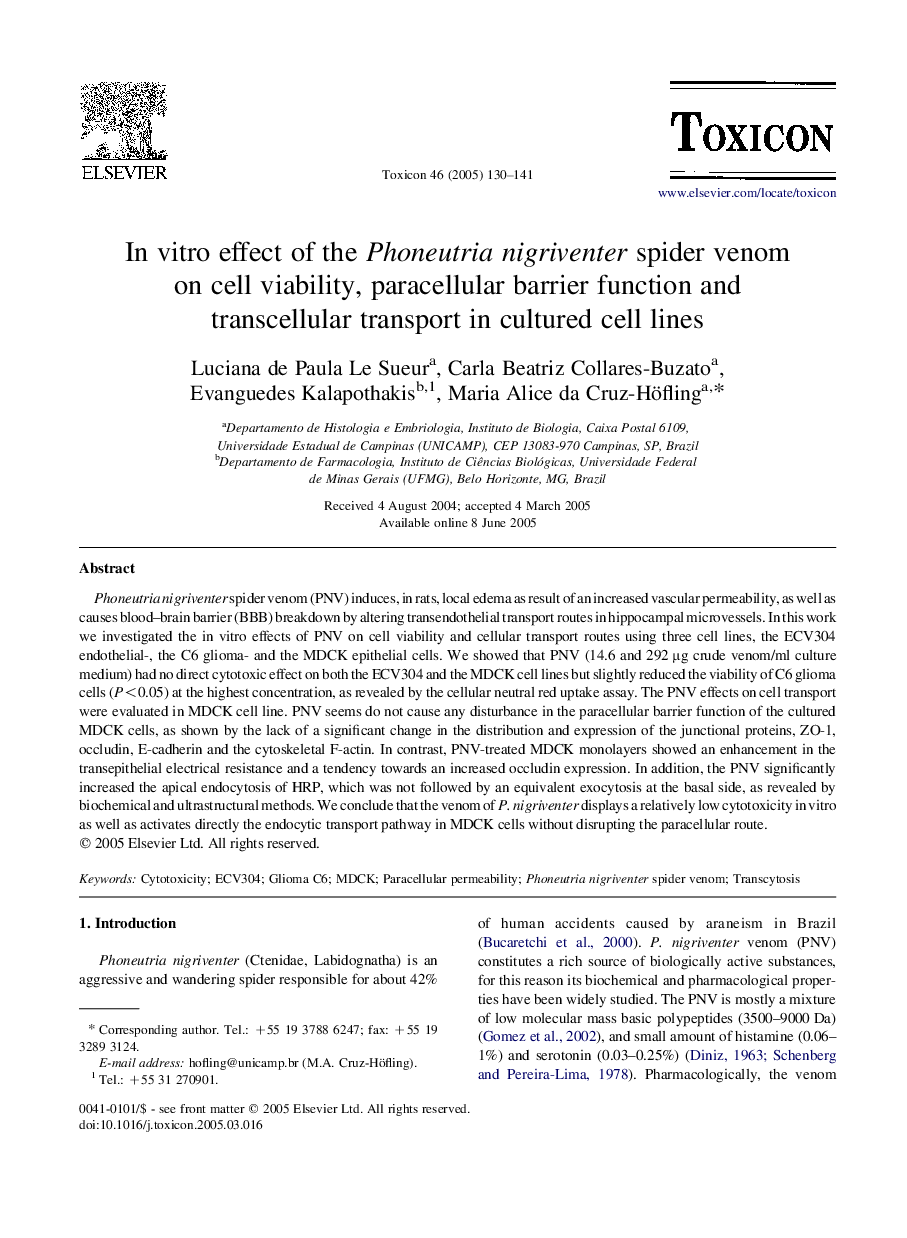| Article ID | Journal | Published Year | Pages | File Type |
|---|---|---|---|---|
| 10880605 | Toxicon | 2005 | 12 Pages |
Abstract
Phoneutria nigriventer spider venom (PNV) induces, in rats, local edema as result of an increased vascular permeability, as well as causes blood-brain barrier (BBB) breakdown by altering transendothelial transport routes in hippocampal microvessels. In this work we investigated the in vitro effects of PNV on cell viability and cellular transport routes using three cell lines, the ECV304 endothelial-, the C6 glioma- and the MDCK epithelial cells. We showed that PNV (14.6 and 292 μg crude venom/ml culture medium) had no direct cytotoxic effect on both the ECV304 and the MDCK cell lines but slightly reduced the viability of C6 glioma cells (P<0.05) at the highest concentration, as revealed by the cellular neutral red uptake assay. The PNV effects on cell transport were evaluated in MDCK cell line. PNV seems do not cause any disturbance in the paracellular barrier function of the cultured MDCK cells, as shown by the lack of a significant change in the distribution and expression of the junctional proteins, ZO-1, occludin, E-cadherin and the cytoskeletal F-actin. In contrast, PNV-treated MDCK monolayers showed an enhancement in the transepithelial electrical resistance and a tendency towards an increased occludin expression. In addition, the PNV significantly increased the apical endocytosis of HRP, which was not followed by an equivalent exocytosis at the basal side, as revealed by biochemical and ultrastructural methods. We conclude that the venom of P. nigriventer displays a relatively low cytotoxicity in vitro as well as activates directly the endocytic transport pathway in MDCK cells without disrupting the paracellular route.
Related Topics
Life Sciences
Biochemistry, Genetics and Molecular Biology
Biochemistry, Genetics and Molecular Biology (General)
Authors
Luciana de Paula Le Sueur, Carla Beatriz Collares-Buzato, Evanguedes Kalapothakis, Maria Alice da Cruz-Höfling,
